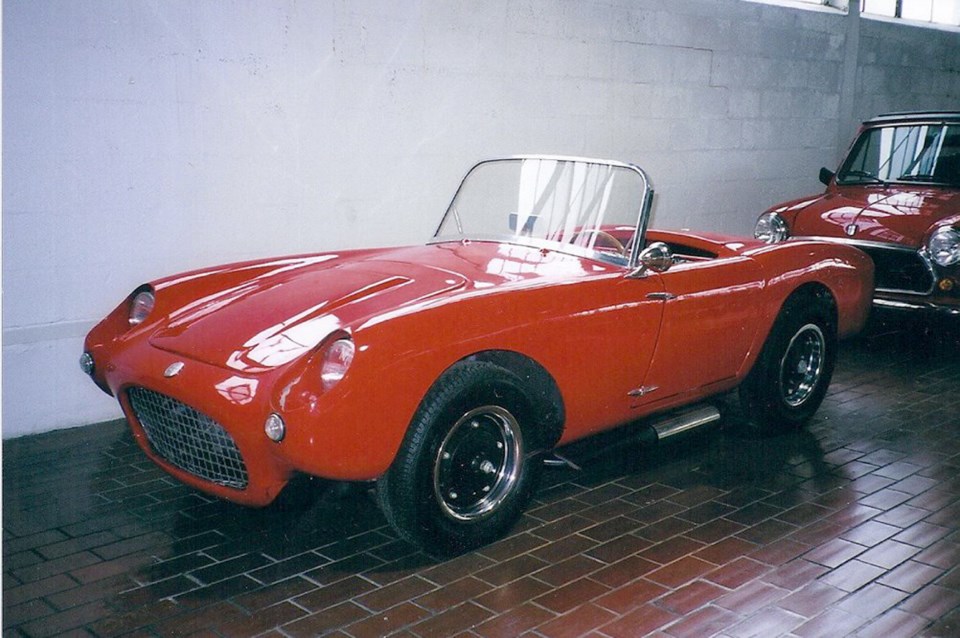During the 1950s, when British sports cars such as MGs, Triumphs and Austin-Healeys were popular, a trailer-making company thought there might be a market for an even smaller, more affordable entry-level sports car. Others, including Crosley Motors of Cincinnati, Ohio, had tried in 1949 with its Hotshot/Super Sport, but Crosley production ended in 1952.
The Berkeley sports car came about In the mid-1950s when Berkeley Coachworks of Biggleswade, Bedfordshire, found its house-trailer manufacturing slowing. It decided to try its hand at building a sports car and engaged consulting engineer Lawrence (Lawrie) Bond, well known for the three-wheeled Bond minicar.
Bond conceived a small unit-construction fibreglass roadster reinforced with aluminum. It was the first use of this method in cars, and it complemented the fibreglass expertise Berkeley had developed building its trailers.
The Berkeley B60 was tiny, even smaller than the 2,159-millimetre wheelbase and 3,480-mm length of the diminutive Crosley Hotshot/ Super Sport. The two-seater Berkeley had a tiny 1,780-mm wheelbase, was only 3,124 mm long and rode on 5.20x12-inch tires. It weighed a feathery 322 kilograms, so light the rear end of the car could be lifted by one man.
A slightly larger four-seater Foursome model would also be offered, but few were built. In spite of its diminutive size, the Berkeley was an attractive little car with its cross-hatch grille and headlamps recessed into the fenders and protected by glass covers.
Power initially came from a 322-cc, two-stroke, two-cylinder, air-cooled Anzani motorcycle engine mounted transversely ahead of the front wheels. Its 15 horsepower went to the front wheels through a three-speed motorcycle transmission and chain drive.
The progressive transmission had a floor-mounted lever (early cars had column shift) with the shift pattern in almost a straight line. It started farthest forward in low gear and moved progressively back to second and high.
A “Dynastart” system combined the generator and starter in one unit, and the fuel tank was behind and higher than the engine, allowing the gasoline and oil mixture to flow to the carburetor by gravity.
Suspension was independent on all four wheels using coil springs with A-arms in front and swing axles at the rear. When unladen, the pronounced positive rear camber gave the wheels a definite “bow-legged” look, which straightened out with passengers aboard.
Even though its performance was pretty modest, riding so close to the ground and the general racket of the motorcycle engine made the Berkeley feel fast. Road & Track recorded zero to 80 km/h in 28.0 seconds and a top speed of 93 km/h. But it did get up to 80 km per gallon, always followed by the telltale two-stroke’s little blue cloud.
R&T’s testers found the cabin cosy enough that the driver and passenger could rub shoulders. The seats were constructed of wide rubber bands fastened to steel tubing and covered with plastic.
It was soon realized that for added appeal, the Berkeley needed better performance, so they fitted an Excelsior air-cooled, 328-cc, 18-horsepower twin, which powered the car that Road & Track tested. This was soon followed by an even larger 492-cc three-cylinder, 30-horsepower Excelsior with a four-speed transmission.
With this taste of power, Berkeley went even further in 1959 with its B95 and B105 models. They had a large square grille with horizontal bars and conventional headlamps that were not behind windows. Power now came from a Royal Enfield 692-cc two-cylinder, four-stroke, air-cooled engine developing 40 horsepower in the B95, and a hot 50 in the B105.
This injection of power made the Berkeley’s performance more sports car-like, with zero to 100 km/h dropping to the 15-second range and top speed rising to 145 km/h.
Also in 1959, Berkeley brought out the three-wheeled T60, which enabled it to take advantage of Britain’s lower tax on three-wheeled vehicles. It was not, however, suitable for North America.
Berkeley’s last try was its larger 1961 Bandit, fitted with a 39-horsepower overhead valve Ford Anglia engine and running gear and Triumph Herald rack-and-pinion steering. It was not designed by Bond and its fibreglass body was now mounted on a separate frame. It was intended to compete with the recently introduced British Motor Corp. Austin-Healey Sprite.
But the Bandit didn’t get into production, and Berkeley went out of business in 1961 after a total of about 4,000 cars had been built. Its demise was the result of poor sales, particularly in the United States, uneven quality and too much competition from the popular Sprite. Thus, another of Britain’s famous “cottage industry” enterprises disappeared.



